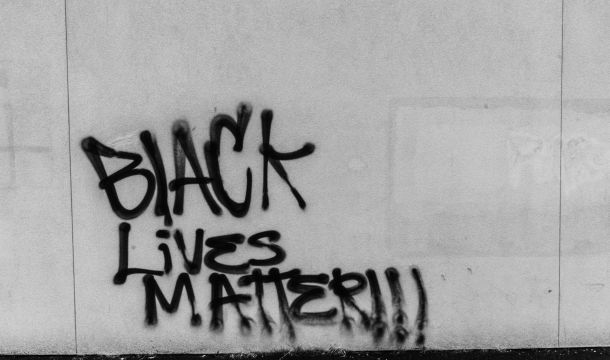In this episode of Cover Your Assets-The Labor and Employment Law Podcast, host Thom Jennings and his sister Kathleen Jennings discuss the characteristics of a toxic work environment and how to address it before it becomes a legal issue.
Some of the topics discussed include effective utilization of the exit interview process, staying connected with your workforce, and identifying characteristics of a toxic workplace.
Podcast Episode Transcript
Narrator (00:04):
You are listening to Cover Your Assets, a podcast that discusses the timely and significant legal issues faced by employers. Kathleen Jennings is an attorney who has over 30 years of experience in advising employers as to their legal responsibilities and has written extensively about employment law. Inner Popular Cover Your Assets blog. If your business has employees you cannot afford not to have your assets covered.
Thom Jennings (00:31):
Hello everyone and welcome to Cover Your Assets, the Labor and Employment Law Podcast. As always, I'm your host,ThomJennings, here with my sister and resident expert and attorney Kathleen Jennings. Kathleen, how are you today?
Kathleen Jennings (00:46):
Doing great, Thom. How are you doing today?
Thom Jennings (00:49):
I am doing fine, and I must say that our numbers, which we discuss pretty much every episode continue to climb. So I wanna say before we begin this topic, thank you very much to all of our listeners and today our topic is inspired by an email from one of our listeners. And as always you can contact us through the show notes if you have a topic that you'd like us to discuss. And we're gonna send this one out to Michelle, Michelle with, I noticed with two Ls. So we're gonna say thank you, Michelle, for offering this topic. And it is indeed, I don't have a drum roll, but if we did, it would be right here. And the topic is a toxic workplace. And before we get into the, the particulars of a toxic workplace, obviously one of the prevailing themes of the cover Your Assets podcast is what situations could cost you in terms of an employer if you don't address them. And in the case of a toxic workplace, it could be very costly. So I guess we'll start with kind of a I don't know, Kathleen. Is the, is the term toxic workplace, is it something that's even used in, in legal circles when it comes to lawsuits or legal actions?
Kathleen Jennings (02:09):
I don't know that it's, it, it's not a legal term, Thom. It's certainly a term that employees will use to describe the kind of workplace that nobody wants to get up and go to every day. What you'll see is that some toxic workplaces may have other issues. Maybe if the toxicity is directed toward particular groups of people such as women or people of color, or people who are gay. If it's targeted toward a particular protected group of people, then you may have a discrimination or harassment issue, which is completely different. Just being a toxic workplace doesn't necessarily mean you have a legal problem. But in today's job market, if you wanna cover your assets, one of the things you need to do is limit the amount of people that are leaving and the number of people that you have to train that kind of turnover is gonna cost you money and time. And a toxic workplace is also gonna cost you good workers.
Thom Jennings (03:21):
And let's be honest, the more employees that you have cycling through the company, the greater chance you have of facing a potential lawsuit. Because a, if if there's a high turnover, it means that there's more employees that are disgruntled and it's the disgruntled employees that are going to be the ones that are more likely than not to start some type of legal action. But let's, let's shift back to the term toxicity and, and toxic workplace. And I, I mean, as you said, it's not a legal term per se, and I think on some level it can be subjective. So we'll acknowledge that. But the reality is when people are in a toxic workplace, they know it.
Kathleen Jennings (04:02):
Indeed they do. Thom, I know I've been in a few toxic workplaces. I would venture to say that you probably have yourself, so I'll give an example of one of the toxic workplaces I was in. And this involved a a senior management person who liked, there are a couple things that he did that were particularly toxic. Number one, he was very moody, and occasionally he would just walk up and down the halls screaming and yelling, I wanna fire someone today. That put people a little bit on edge, surprisingly. And then the other thing that I found even more toxic was this was someone who would go into each employee's office, shut the door, and then proceed to talk smack about all of the other employees. And then when he was done in that office, he would then just go to the next office and do the same thing. And eventually everybody figured out what was going on. But it's, it's a very negative atmosphere because it essentially pits employees against one another.
Thom Jennings (05:18):
Yeah, I think that that is the key right there is that a toxic workplace environment is oftentimes, at least in my personal experience and with people that I've spoken to about places that they've worked, and they've had a hard time there, there's typically a situation where employees are going against other employees in some way, shape or form. It creates a competitive environment that's an unhealthy competitive environment. And it, it, again, it becomes difficult to work and people just don't want to go there. Now, I, I had a situation, and I think this may be somewhat typical in sales. I mean, in sales you have employees going against other employees that's, that's natural. It's almost like a sports team type atmosphere. But we had a supervisor that had a favorite employee and would give that employee the, the better leads and those types of things. So then this created a lot of resentment amongst the rest of the staff, and everybody was complaining and, you know, eventually that almost that entire staff turned over. So I guess the question would be this, I I would assume that the best way to address a toxic work environment is in hiring of mid-level supervisors because I feel like they are the one that can either mitigate the circumstances or they're just gonna add fuel to the fire.
Kathleen Jennings (06:40):
I agree, Thom, and, and certainly upper management needs to be supportive of the kind of environment that fosters teamwork and productivity rather than, like you said, the unhealthy competition. Now, maybe there are some workplaces that thrive on that unhealthy competition, and there may be some people who don't mind that, and that's, that's a business decision that the company can make. But I think for the most part, most people don't wanna work in that kind of workplace. There's enough unhealthy competition out there anyway. And so you need to think about what kind of people do you want working for you, and do you want them to be relatively satisfied with what they do and, and who they work with? You know, we don't all have to be in love with all the people we work with, but it's a difficult situation if you have folks who literally hate coming to work because they cannot stand some of the people they work with. Now that comes down to whose problem is that, you know, is it somebody who's overly sensitive versus somebody who maybe is a bully? There's a lot of layers to the issue.
Thom Jennings (08:00):
Yeah, I agree. And I, and I think that it, it comes down to we, you know, we talk about mid-level management and upper management bears a great deal of responsibility, but I think in some cases this falls into two categories where you'll have upper level management that is oblivious to situations because maybe they're caught up with some day-to-day administrative things and they aren't spending enough time walking around or just spending time with employees. So that's, that's due to a disconnect. And then I think there's the other ones that I, that I like to, that I will now dub I'm gonna come up with my own expression, the downhill managers who just like to make the crap flow downhill, use the middle, mid-level manager as their bully to kind of run through and enforce rules and, and keep a layer of protection from them. And then still try to be the good guy up at the top like, oh, you know, I, I had no idea this was going on, even though they were the ones that were kind of playing with the puppet strings, so to speak. But
Kathleen Jennings (08:58):
Wow, it's a pretty cynical view of, of corporate America there, Thom.
Thom Jennings (09:03):
Well, it's it's, I think it's a very realistic view of some toxic workplaces, and not every place is a toxic workplace, but I also think that once it starts happening, it's very, very, very difficult to reign it in because as much as in society today, we love to point to one individual that, oh, you know, if we get rid of them, this will get rid of the toxicity in the workplace. That's not always the case. Now the, the other side of the coin in that case is sometimes it is, I think that's another situation where you have, you can have an individual employee who's created a, a toxic workplace and for whatever reason, management will not acknowledge that and will not simply get rid of that employee. And sometimes getting rid of that employee changes the entire game.
Kathleen Jennings (09:53):
Absolutely. And this is, this is where a good human resources person should know their workplace. If a good human resources person starts seeing an increase in turnover, then this is the opportunity to use exit interviews to find out from the folks that are leaving, why are you leaving? And you know, sometimes employees aren't gonna tell the truth because they don't wanna burn bridges, but if you can, you need to try to find out, you know, what's the problem or what could we do better? Or, or something so that you can pinpoint what is the issue? What, what are we doing wrong or what are we doing to drive these people away, especially if these are good employees. You know, sometimes if your bad employees get run off, eh, not so bad. But if you have good employees that are leaving and going someplace else, you need to find out why that's happening.
Thom Jennings (10:52):
Yeah, and you, and I think you bring up an excellent point that, that I hadn't thought of, but the exit interview process, it's one that, I mean, I think if a company's doing it as a formality, because oh, you know, that's just what people do. They do exit interviews, then it really serves no purpose. But there's a, a couple of thoughts that come to mind when it comes to exit interviews is that, one, they could be very helpful if they're approached in a way that makes sense. And also if you create an atmosphere where the exit interview process maybe can create an environment where people feel comfortable to really tell the truth. And I think where an HR person or a business owner can miss an opportunity is they, they have to realize that if an employee is leaving a company, they may still be connected for quite some time.
Thom Jennings (11:39):
Because if they've established relationships with fellow employees and they're, they're gonna be, you know, what's gonna happen, somebody's gonna make that phone call and say, Hey Kathleen, you had the exit interview, how'd it go? And if they say, ah, you know, it was a bunch of nonsense and they didn't really listen to anything I said, then who cares? But, and the other side is, is that if people aren't even doing exit interviews, then you know that there really is a problem, like you said, because they don't wanna stir up any problems or have a bad reference or anything like that. So I guess to come back to the, to exit interview, what would be your suggestions in terms of creating a process that is effective in terms of utilizing exit interviews and maybe if there's a case where it, it's not worth it to do it, if ever?
Kathleen Jennings (12:26):
I think, you know, as I said before, that the exit interview is an opportunity to find out what it is the company could do better, perhaps some employees they're gonna leave and they're just gonna complain and complain and about everything. And, and, okay, so you hear them out. Also, keep in mind that these folks, even if they don't work for you they can still talk about your company to others, including other perspective employees. So you want to have the tone of the exit interview to be positive so that these folks don't go out and say bad things about your company based on what you said or did during the exit interview. At the end of the day, you can't make anybody tell you why they're leaving if they don't want to tell you. But hopefully you would have enough rapport with employees that even when they leave, they can give you some sense of, you know, this is, this is part of the reason, or this is some of the reason I don't wanna make trouble, I don't wanna name names, but, you know, here's some of the issues. And really, as a practical matter, you would hope that the problems would've been reported to HR or to somebody before it reached the point of somebody deciding to look for another job.
Thom Jennings (13:45):
Yeah. And, and I mean, that's, that's a great point as well. And so when would you suggest that an HR person schedule an an exit interview? I mean, my experience has been, it's been all over the map. I've, I have companies that will do it the very last day before the employee leaves. And I think in some ways that's ineffective. I've seen companies that have done it, if a person gives two weeks notice, maybe a couple days after that, so they still have a couple weeks to kind of kick around the workplace. I mean, my thought would be it's better to do it sooner than later because somebody gives their notice, they may burn some vacation time, and again, at a couple weeks later, they'll just be, I don't wanna deal with a hassle. So I think right after somebody has given notice is probably when they're thinking about why they gave notice in the first place.
Kathleen Jennings (14:33):
Sure, sure. And, and sometimes maybe you could even talk people out a leaving in this job market. There are employers now that'll offer more money to somebody who's especially valuable, and maybe that'll help, but you still need to find out what it is. If if it's just money that is causing someone to leave, then that's an opportunity to look at your pay scale. Are you competitive with other companies in your same industry? Are you losing people because of that? Can you afford to, to raise some of the pay? I mean, that's, that's something that a lot of, especially small businesses are struggling with right now because of inflation and job and, and, and wage inflation in some places. But I, I agree with you, Thom. I think soon after the employee tenders, their notice is probably a good time to just sit down and, and make it more like an informal conversation. Don't, don't try to make it overly formal because you're just trying to get information out of them.
Thom Jennings (15:38):
All right. And let's circle back to the topic at hand, which of course is a toxic workplace. And what would you say are, I mean, again, it, we mentioned before it's subjective, but I think that there are certainly some things that are typical of a toxic workplace. What would you say is maybe the top three or four indications that to a supervisor? Cuz let's be honest, an employee knows if it's toxic because they're the ones that are feeling it. How do, how can a supervisor identify that there is a problem that could be creating much bigger problems down the road if it's not addressed?
Kathleen Jennings (16:18):
I think some of the, the indications you would look for are employees who won't talk about anything. They'll, they'll come to work, they'll do their job, they'll get out of there, and they don't wanna talk, especially to somebody in supervision or management about what's going on. Do you know? And, and if you see people that are just going through the motions because they don't care what's causing that, and even people who may even look a little fearful or you see absenteeism increasing either because of stress brought on by the toxic workplace, or even the stress can cause physical illness in employees and increase the amount of absenteeism. So that's a big indicator if you start seeing a lot of people laying out or calling out because they have stress related issues.
Thom Jennings (17:15):
Yeah, and, and I think we, we should address this, which I'm not sure if we have in any other episode, but a toxic workplace could also lead to union activity where there could be a workplace where a union does not exist. And let's be honest now, we grew up in Rochester, New York, and Rochester, New York was known for Kodak and Kodak at its height was a great place to work. And then there was also Xerox, Xerox was, union Kodak was not. Kodak took great pains to make sure that unions didn't come in by offering good benefit packages and, and creating a, a work environment where union activity could not flourish, but union activity flourishes in workplaces where people are not happy with some situation. And that doesn't necessarily have to be pay, it could be working conditions, it can be perceived, you know, favoritism in terms of promotions and nepotism and all that kind of stuff.
Kathleen Jennings (18:13):
Yep. Then, and right now, Thom, in this economy, in this atmosphere, unions are stronger than they've been in a long time. They, I I believe over 60% of Americans view unions in a favorable way. So that is absolutely something that a toxic workplace is vulnerable to, which is unionization. And now more than ever, it's something that you would have to watch out for. And once that union gets in, it is really hard to get out.
Thom Jennings (18:51):
Yeah. And that's that could be an asset changer for a business.
Kathleen Jennings (18:55):
And a big
Thom Jennings (18:56):
One, I, I mentioned is another thing, you know, nepotism and favoritism, and I think they're they're kind of, I guess for lack of a better term, kissing cousins. Not that I might have cousins kiss. Well, kind of, but you know what I mean. So even if nepotism or favoritism doesn't exist, still the perception of it can be a huge, huge problem. So what would be your recommendations in terms of maybe trying to avoid that or address it? Cuz I don't, I, I, I can't, I can think of many workplaces that I've been at where, you know, a cousin's been hired or a best friend's been hired, and you, they, they create this little click of a team, and even if it's a team isn't too bad, people will say, well, the only reason this person got promoted was because of this, this, and this. How do you avoid that? Or, or, or do you or how do you address it so that doesn't get out of hand?
Kathleen Jennings (19:53):
That's a hard thing to probably either avoid or address, especially you, you know, if you have a family business, you're necessarily going to have members of the family in the business, you know, such as if you had a bagel business and maybe you had your wife there and you know, husband and wife, and then a son or somebody. I mean, how does that look? It, it, I think the members of the family need to probably work harder than, than the other folks who are not members of the family, just to show that they're there on their own merits for the favoritism and, and that kind of, you know, favoritism in the workplace, there's really no place for that. It's, it's not appropriate. And, and that can be very toxic because it's, it's very demoralizing to the folks that are not considered the favorite because they feel like nothing they do is ever gonna get them ahead.
Thom Jennings (20:57):
And I'll throw another situation out because this is another one I've dealt with on many occasions, and that is the habitually absent employee that everyone else has to do extra work because they never come to work. And yet for some reason, the perception is that they don't want to get rid of this individual. And that kind of goes back to something we said earlier in the episode about there are situations where the toxic toxicity in the workplace is directly related to an individual or maybe a handful of individuals. So I, I mean, I've been in situations where an employee, there's a particular employee that calls in sick all the time, and everybody else has to pick up the slack because for whatever reason, the employer, why, I don't wanna say for whatever reason, I mean, I, I get it from an economic standpoint, you can't necessarily hire another person to replace a person that exists. But what happens is if you have people that are habitually absent, then other people have to do more work. It creates a lot of resentment.
Kathleen Jennings (21:58):
Yes, it does. Yes it does. And that's, you know, that could be a situation where that employee, the absent employee is protected by F M L A or the a d a, and so it's very difficult for the employer to do something about it. But even under the a d a, the ability to report to work is considered an essential function of pretty much every job. So habitual absenteeism to the point where other people are having to perform that job is a problem.
Thom Jennings (22:33):
And it, and yeah, I think the other thing that, that you have to consider when it comes to an individual that may be the cause of the toxicity in the workplace, is that you have to be cognizant of any potential claims of discrimination. So it goes back to what we said in previous episodes, document, document, document. If you see an employee that is starting to cause problems, hurting morale, complaining to other employees, you gotta start the process. You have to be fair because if for some reason they're in a protected class, and even though you've terminated them specifically because they've created a, a difficult situation at work, then you could be exposing yourself to a lawsuit. I, I'd see these lawsuits all the time. I mean, usually you'll, you'll read in the paper where someone will say, well, I was definitely discriminated against. And the employer's counterclaim is is that no, you were just a horrible employee. Like we had to get rid of you because you were, you were creating a toxic workplace environment. So again, common sense advice, but document, make sure that you're absolutely specific. And I mean, unfortunately, you know, you c toxic is, is said subjective, but there are things that an employee, employee can be doing that certainly can be documented to make sure that you're keeping your ducks in a row. Not sure why we have ducks, but
Kathleen Jennings (23:54):
I think because you wanna cover your assets, so you're documenting that process in order to cover your assets. I would also throw out the monkey wrench in that scenario is how about the employee that is so valuable, either because they have specialized knowledge or skill or they are above and beyond the highest salesperson or something, but at the same time they are toxic for whatever reason. That's a hard situation because on the one hand, you have this employee whose performance is valuable to the company, but on the other hand, this is someone who's driving people away from your company. And that's a, that's a hard situation for employers to deal with.
Thom Jennings (24:47):
Yeah. I, and I, and that's to me that doesn't seem like a very uncommon situation. And I've, I know I've faced it in different workplace situations and you know, at the, at, at the end of the day, nobody's irreplaceable <laugh>. They really aren't. And I think sometimes there are employees that do a really, really good job of creating the perception, whether it's reality or not, that the company will not survive without them. And that's not to say that, like I said, if there's somebody specialized, maybe it's a computer programmer or somebody who's done something, that if they were gone that the company wouldn't struggle, of course they would. But you're right, you have to, you gotta pick and choose. You gotta decide whether you're gonna look out for the greater good of the company and maybe the long term growth of the company, or live in fear, I suppose, because that sounds like a, a fear proposition.
Thom Jennings (25:39):
Well, if I terminate Kathleen, then I don't have a person who could do this, this, and this, and you know, what are we gonna do? But Right, the flip side is if we don't get rid of this toxic employee, then everybody else is gonna leave. So that's that's a tough scenario, but I think it's one that employers have to be very cognizant of, because like I said, it could come down to, well, we, we held onto this one employee, and then three other ones turned around and filed a lawsuit against us because the, the workplace atmosphere.
Kathleen Jennings (26:06):
Right. Absolutely.
Thom Jennings (26:09):
All right, well this has been a a spirited episode.
Kathleen Jennings (26:14):
I feel like all of our episodes are spirited, Thom, and let me point out that I have received a compliment on har witty repartee during our episodes.
Thom Jennings (26:24):
Well, I would, I would say thank you if I knew how to spell rep Harte. I, I think it's R e p a r t e with a little thing Amadu on it. Is that French?
Kathleen Jennings (26:36):
Well, this is this is oral, so I, I don't know that you have to actually spell it in order to be able to, to say it
Thom Jennings (26:44):
Close captions. Somebody's gotta figure out what it is. So we have to pronounce it correctly and know how to spell it if we have to go in and change it. But all kidding.
Kathleen Jennings (26:51):
Let's say our, our witty banter. How about that?
Thom Jennings (26:53):
Banter is much better.
Kathleen Jennings (26:55):
Yeah. Let's, let's back up. So Thom, I've received a compliment on our witty banter on these episodes, so I wanted to pass that on to you so that you would be aware that we are witty when we banter,
Thom Jennings (27:08):
We're witty and we are banter ish. It's, it's almost like we grew up together as brother and sister. It
Kathleen Jennings (27:12):
Is, it's crazy, isn't it, <laugh>?
Thom Jennings (27:14):
Yes, absolutely. Well, let us conclude with some takeaways and on my end, you know, the thing that that come to mind, again, toxic workplace, if you are top level management, make sure that you're connected, that you know what's going on. And if you're mid-level management, again, you're, you're on the ground and you gotta make sure that you're talking to people. Don't have your one little favored workplace person. Be the only person that you talk to. Make sure that you're talking to everybody. I've been in plenty of situations where the supervisor talks to one or two people and they get a very different impression of the workplace <laugh> and the, the reality for the other people. And of course, if you have a toxic work environment that's related directly to one individual, address that individual document. If you're gonna have to get, get them out of the, the workplace, if you're gonna terminate them again, terminate them with dignity. I think we
Kathleen Jennings (28:06):
Didn't episode with dignity on that. Yeah. Yes, we did.
Thom Jennings (28:10):
Anything else that you can, that you can think of,
Kathleen Jennings (28:12):
Make good use of your exit interviews so that you can find out the, the root cause of employee turnover?
Thom Jennings (28:19):
Absolutely. Yeah, I forgot about that one. Exit interviews. We could do whole episode on that. No, we couldn't <laugh> I dunno what we do. If, I feel like if we could do 30 minutes just talking about exit interviews, we could, we could earn like a podcast Grammy or something. That would be, that would be incredible.
Kathleen Jennings (28:38):
I feel like that's something thatThomJr. Could help us with.
Thom Jennings (28:40):
Yeah, maybe, maybe we'll talk with him about it. But yeah, as always what's your contact information so people can get in touch with you, like our, our first email suggestion for a topic from Michelle with two Ls.
Kathleen Jennings (28:53):
We welcome show suggestions and feedback, and if you want to send them to me, send them to my email address at K J j, at wim law.com.
Thom Jennings (29:03):
All right. And as always, thank you very much from the cover Your assets podcast for continuing to listen to share all that kind of good stuff. We, we need some reviews out there, so if you're a review type person and you wanna write something nice about us, please do. And if you wanna write something horrible about us, please don't, because we don't, we don't, we
Kathleen Jennings (29:22):
Don't want that. I agree. That
Thom Jennings (29:23):
Would just, that would create a toxic podcast atmosphere, which
Kathleen Jennings (29:27):
We absolutely need. We don't need that.
Thom Jennings (29:28):
No, none of that. None of that.
Kathleen Jennings (29:30):
No.
Thom Jennings (29:31):
No. All right. And again, thank you very much for listening. I will see you next time, along with my sister and resident expert, Kathleen Jennings. I wanna say thank you. We'll see you next week.
Podcast Disclaimer
The Cover Your Assets-The Labor and Employment Law Podcast is produced by Thom Jennings of the Caronia Media Group. For more details, you can contact him at thom@caroniamediagroup.com.
The information provided in this podcast is for informational purposes only and not for the purpose of providing legal advice. You should contact your attorney to obtain advice with respect to any particular issue or problem. Use of and access to this podcast or any of the e-mail links contained within the site do not create an attorney-client relationship between Kathleen J. Jennings. The opinions expressed at or through this site are the opinions of the individual hosts and guests.

Kathleen J. Jennings is a former principal in the Atlanta office of Wimberly, Lawson, Steckel, Schneider, & Stine, P.C. She defends employers in employment matters, such as sexual harassment, discrimination, Wage and Hour, OSHA, restrictive covenants, and other employment litigation and provides training and counseling to employers in employment matters.
Related Content
Get Email Updates
Recent Content

NLRB to Seek Rescission of past Discipline Imposed under Overbroad Employer Work Rules

Do Drive Cam Cameras inside Trucks Violate Employee Rights?

Amazon Considers Risk When Investigating Employee Misconduct

Latest NLRB Attack Goes beyond Non-Compete Agreements to Reach Outside Employment

NLRB Board Addresses BLM Insignia at Work




